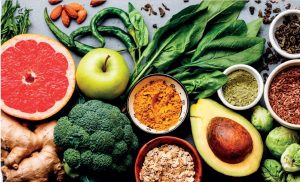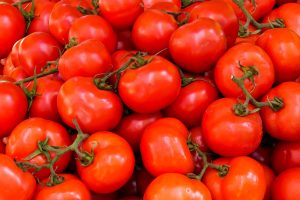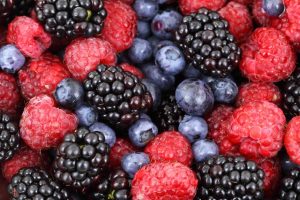We care for our eyes... even at the table
Follow a appropriate dietary regime to our needs, associating it with a constant physical activityis without doubt the best recipe for leading a healthy life. The variety of foods available to us is very wide, as are the possible combinations of different foods. This allows us, therefore, to have a wide range of choices to make a purpose-built diet according to one's nutritional needs, as long as it is always healthy and balanced.
The enormous importance of the topic requires global attention and commitment, both from private individuals and from entities belonging to the public sphere. It is for this reason that both the institutions and various scientific bodies, in recent decades, have committed themselves to spreading a correct food culture, issuing, in the main countries of the world, a number of regulations on the subject, Guidelines or Directives concerning nutrition, such as those published in Italy by the Ministry of Health in 2003 and constantly updated.
In addition, thanks to numerous scientific evidences, more and more importance is being given to foods that are defined as 'functional foods'or foods with beneficial properties that, on the one hand, help to improve our health while, on the other, helping to prevent the onset of disorders and diseases. They are functional foods as they contain, for example, vitamins, minerals, antioxidants or probiotics, all of which are useful in improving certain physiological functions and reducing the risk of certain diseases, some very serious, such as cancer.
Although the benefits of a healthy diet are well known, what is less well known is that the health of our eyes, among the most delicate and precious organs of the human body, also depends on our behaviour at the table. In order to keep our eyes and eyesight healthy, it is therefore necessary to pay close attention to our relationship with food and ensure that we consume the right amounts of functional foods that preserve the health of the visual apparatus. Many eyesight disorders can be caused by bad eating habits and/or nutritional deficiencies, especially of elements such as carotenoids, fatty acids and vitamins.
So what are the best foods to keep our eyes healthy, preserving and protecting them from disease?
 Useful nutrients and where to find them
Useful nutrients and where to find them
Scientific research has highlighted a number of useful and functional nutrients with proven beneficial properties for eye and vision health. Below is a detailed discussion of some of them.
Carotenoids
Carotenoids are a family of 600 organic pigments of plant origincharacterised by bright colours ranging from red, orange to yellow. These pigments give vegetables such as carrots, pumpkins and tomatoes their characteristic colour. Of the 600 carotenoids mentioned above, however, only a few have proven beneficial properties for the human body and their intestinal absorption is favoured by the cooking of the vegetables and the presence of certain fats during their consumption. Regarding the relationship between carotenoids and the ocular system, the most important ones are: lutein, zeaxanthin, meso-zeaxanthin, lycopene and astaxanthinelements that can reduce the risk of certain diseases of the visual apparatus.
- Lutein, zeaxanthin and meso-zeaxanthin
They are carotenoid pigments concentrated in the human macula (the central area of the retina). They possess antioxidant properties and are useful for the protection and strengthening of retinal tissueprotecting it from ultraviolet rays that could damage it. These nutrients are found in many vegetables, especially yellow, orange and red ones. such as pumpkins, tomatoes and cornand in green leafy vegetables such as spinach, broccoli, cabbage and chard. The intake of these carotenoids helps prevent various eye diseases such as ageing or macular degeneration.
- Lycopene
It is a carotenoid with distinctly antioxidant properties, being able to counteract the activity of free radicals. Lycopene is found almost exclusively in tomato (giving it its typical bright red colour), although, in smaller quantities, it is also found in some fruits such as apricot, melon, watermelon and papaya. However, as lycopene cannot be synthesised by the human organism, it must be ingested through the diet. This can be done through the consumption of tomatoes, either raw or processed (pureed or simmered), as long as it comes in contact with a small amount of EVO (Extra Virgin Olive Oil). Specifically, it has been shown that the cooked tomato provides a much higher amount of lycopene than simply raw tomatoes and the high temperature allows the intestine to absorb this carotenoid more easily. The beneficial effects of lycopene on the visual system range from prevention of inflammation and oxidative stress associated with diabetes, to the prevention of Age-Related Macular Degeneration (AMD), to the maintaining the optic nerve in good health.
- Astaxanthin
Astaxanthin is a carotenoid a member of the xanthophylls class, naturally occurring in certain types of algae. This carotenoid is present in abundance in the macula of the eye and, like lutein, is able to cross the blood-brain barrier and deposit in the retina of mammals. The highest concentration of astaxanthin is found in the microalgae Haematococcus Pluvialis and the absorption of the latter gives salmon, trout, shrimps and other crustaceans the typical orange-red colour. This carotenoid has a high power antioxidant and, in addition to having anti-inflammatory properties, increases the UV protection. It is therefore advisable to take the right amount of astaxanthin and, in order to supplement your intake, you can find the microalgae Haematococcus Pluvialis as a food supplement in tablet form.
In addition, astaxanthin, in combination with other substances beneficial to retinal health (such as carotenoids, omega 3, vitamins etc.) is present as a food supplement in capsules or tablets.
 - Omega-3 and Omega 6 (for more details, click here)
- Omega-3 and Omega 6 (for more details, click here)
They are polyunsaturated fatty acids that are very important for the well-being of our bodies. Essential for a balanced diet, they are not synthesised by the body and, therefore, it is necessary to take them up through food. This can be done through the consumption of fish, shellfish, dried fruit and some vegetable oils, such as linseed oil, soya, maize seed (Omega 6) and hemp seed. In the event of an increased need, it is also possible to take dietary supplements, which are available in the form of capsules and, in some cases, oil. Omega-3s help reduce the risk of contracting cardiovascular diseaseskeeping cholesterol at acceptable levels and controlling blood pressure levels. Omega-3s have also been scientifically proven to provide specific benefits to the ocular system. In fact, a diet rich in these polyunsaturated fatty acids appears to decrease the risk of the onset of eye disease. dry eye syndrome ('Dry Eye syndrome'), the Age-Related Macular Degeneration (AMD) and several age-related eye disorders. Furthermore, it has been shown that an Omega-3 deficiency may predispose to the onset of glaucoma.
Vitamins (for more details, click here)
- Vitamin A
Vitamin A or retinol is among the most important vitamins for the ocular system. A proper intake of this vitamin helps in the prevention of retinal degenerative diseasesIt also protects it from damage caused by light. It is found in foods such as milk, eggs, liver and in some vegetables such as pumpkins and carrots.
- Vitamin D
The most important human forms of this fat-soluble vitamin are vitamin D2 (ergocalciferol) and vitamin D3 (cholecalciferol). Unfortunately, a deficiency of these vitamins often results and must be supplemented. Vitamin D2 can be taken in through the consumption of foods such as blue fish, salmon and eggs, while cholecalciferol (vitamin D3), is mainly synthesised in the skin following a brief exposure to sunlight. A correct intake of vitamin D can be beneficial in preventing Dry Eye Syndrome. Furthermore, a study published in the Journal of Ophtalmology highlights the close correlation between vitamin D concentration in the blood and myopia.
- Vitamin C and Vitamin E
Both of these vitamins possess high antioxidant power and also help prevent the onset of retinal degenerative diseases. Vitamin C is present in citrus fruits, kiwi, blackcurrants, cabbage, spinach and tomatoeswhile vitamin E is widespread in foods such as dried fruits, cereals and pulses.
- Vitamin B
The intake of B vitamins, especially B1, B2 (Thiamine and Riboflavin respectively), B6, B12 and folic acid, is essential for maintaining good ocular health. They, in fact, in addition to preventing degenerative diseases of the visual apparatussupport the good functioning of the eye musclespreventing the onset of inflammation and reducing the risk of eye muscle paralysis. B vitamins are present, for example, in milk, eggs, peanuts and cereals.
Bioflavonoids
They are plant pigments found in plants with antioxidant properties and bring multiple benefits to our health. Mainly, they act positively on the blood microcirculationincreasing the resistance of small vessels. Due to this characteristic, Bioflavonoids are used in the retinopathies of the vascular typesuch as diabetic and hypertensive conditions. They can be taken through a proper diet rich in fruit and vegetables. In addition, the anthocyanosides, a type of bioflavonoids, are contained in large quantities in the berriesespecially blueberries and strawberries.
Lecithin
A group of phospholipids, abundantly present in the soya. Soy lecithin plays a key role in controlling blood cholesterol levels. Due to its composition, it can be used as an alternative to water-based artificial tears in therapies aimed at reducing the symptoms caused by 'cholesterol.dry eye. Thanks to its special chemical structure and antioxidant properties, it can be useful for preserving the health of the retina.
Zinc
Zinc (Zn) is present in eye tissue (particularly in the retina and choroid) in large quantities. Its role is fundamental to ocular health as Zinc helps the absorption of retinol (vitamin A) in the body. A Zinc deficiency is among the contributing causes of diseases such as Age-Related Macular Degeneration, Diabetic Retinopathy as well as problems in eye development. Zinc can be taken through consumption of seafood, red meat, liver and dark chocolate.
Selenium, copper, manganese
These are three elements with high antioxidant power. Selenium, which among other things, promotes the absorption of vitamin E and is contained in the fish, dairy products and cereals, as well as in the sunflower seeds and nuts. Copper and manganese, on the other hand, are contained in the seafood, legumes, fruit and cereals.
 The role of food supplements
The role of food supplements
Most of the foods we consume through a balanced diet are sufficient to cover our daily requirements of essential nutrients. However, in situations of increased need, such as during periods of high stress and fatigue, or when we are unable to follow a healthy diet, we may consider using food supplements.
Some of these supplements may also contain a mix of molecules ad hoc for the maintenance of eye well-beingsubstances, for example, that we do not normally take regularly through our diet such as:
–turmeric, saffron, Bromelain, Coenzyme Q10 and Boswelia with antioxidant action;
-the resveratrolsubstance capable of stimulating microcirculation;
–astanxanthinwhich, like lutein and zeaxanthin, reduces inflammation and the effects of oxidative stress.
In any case, the ophthalmologist is the specialist who must advise the patient on the most suitable supplement for his or her condition and remove any doubts about the health of his or her eyes.
Eye diseases and nutrition
On the subject of eye diseases related, in terms of prevention and/or treatment, to a healthy diet, we provide you with a list with links for further information.
- DRY EYE
- VITREOUS DEGENERATION OR FLYING FLIES
- DMLE
- DIABETIC RETINOPATHY
- DIABETIC MACULAR OEDEMA
- GLAUCOMA
This article can also be downloaded in pdf format. To download click here: Card - 2: Eye: healthy eating and dietary supplementation
© Copyright "l'Oculista italiano" - May 2019
Dr. Carmelo Chines
Direttore responsabile
